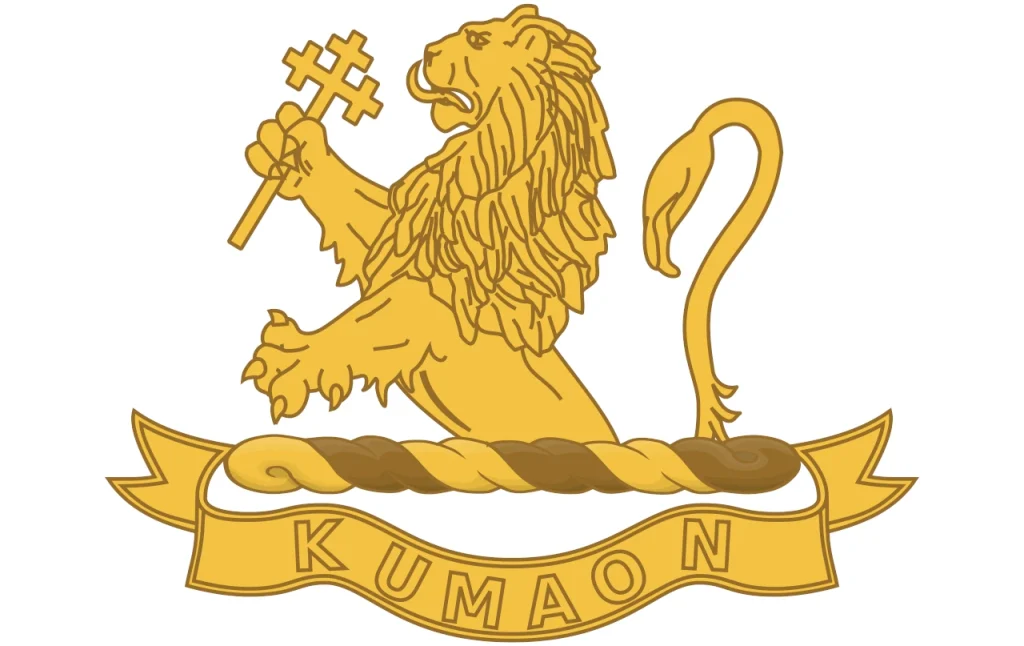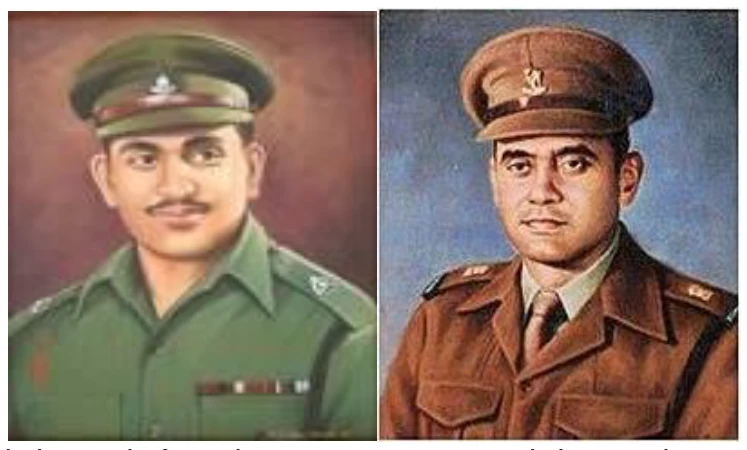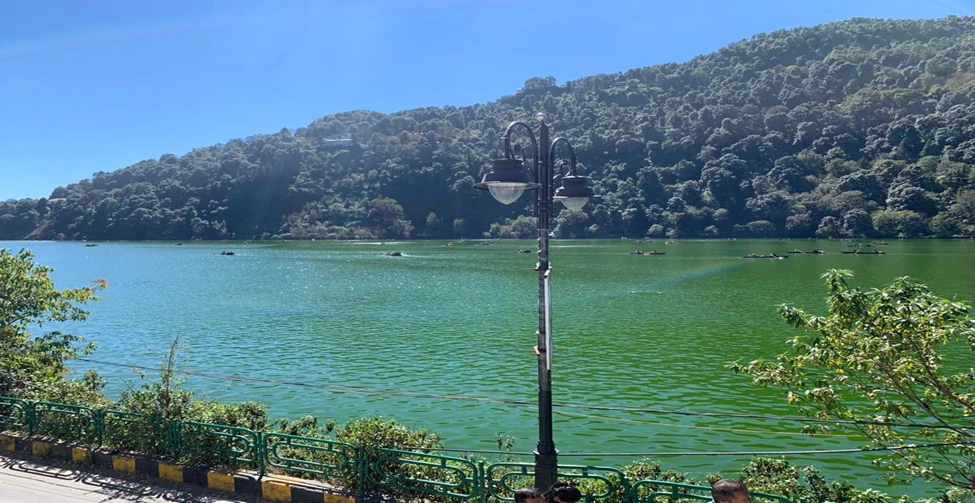My first exposure to the KUMAON Region was over half a century back in 1955 as a young student in the A N Jha Govt Rural High School in Rudrapur, then an obscure small Tarai farmers’ town where they came regularly to sell their crops and purchase their daily needs. But it was in 1957 that I was first mesmerized with the KUMAON Hills when I went to Nainital as part of our school’s sports team to participate in the Nainital District Schools’ Athletics Meet. Having traveled in the lower class seat on top of the rear wheel of the overcrowded, rickety UP Roadways bus, I landed in Nainital with a spinning head and awful nausea that put an end to my yet-to-start athletics career. But the love blooming for the KUMAON Hills had been kindled within me by then. It was Major Prem Bhatia – my elder brother who was commissioned in 6 KUMAON on 4 Dec 1954 and was then serving in The KUMAON Regimental Centre, Ranikhet, who had ignited The KUMAON passion within me. Our great Regiment has produced many brave soldiers and generals, but it’s my late brother, Major Prem Bhatia, Vir Chakra, Hero of the Battle of Walong, who has ever remained my sole role model for me. He was severely wounded in the Battle of Walong and survived, but the tragic scooter accident on the last day of his staff College Course in Wellington on 28 Feb 1965 cut short his promising career, putting our family in the shocking gloom forever. I was shattered and devastated, and I can not believe the tragic truth even now. Yes, I always miss him and salute him for ever… It’s a matter of pride that his son, Maj Gen Arvind Bhatia, retired from service after successfully commanding the 6 KUMAON, Brigade and Riasi Sector in the Rashtriya Rifles as Major General. He was Deputy Commander in Congo in the UN Peacekeeping assignment & India’s Defence Attache in Islamabad, Pakistan. He had graduated from the prestigious Higher Defence Management & National Defence College & awarded AVSM for his distinguished service.

The ‘KUMAON Dev Bhoomi’ or ‘The Abode of Gods’ is the land of the Mahakali and its major right bank tributaries, the Gori Ganga, the Dhauli Ganga, and the Ram Ganga. Like the other major source rivers of the Ganga, the Mahakali, too, originates North of the Great Himalayan crest zone and forces a passage through the main range to merge with the Ganga in the distant plains. Thus, KUMAON is one of the five geographical zones of the Himalayas – Nepal, Kurmanchal, Kedarkhand, Jalandharkhand, and Kashmir, as mentioned in our ancient textbooks.
The word ‘KUMAON’ means different things for different people in our nucleus family. For my late brother and me perhaps it always meant our great Regiment – the KUMAON Paltan and teri topi, the bulas singing “Beru Pakyo Barah Massa…” and other haunting KUMAONI folk songs, community dancing in rhythmic but vigorous steps, fascinating snow capped Nanda Devi and Trishul peaks, the Jim Corbett Park, the Swiss Hotel and Naini Lake in Nanital, The Jhula Devi and Kalika Mandir, The West View Hotel, ever blooming blood red rhododendrons whose syrupy juice rejuvenates tired mind, body and soul, the pine & oak trees touching the sky, The KUMAON Regimental Centre and Col Ram Singh, affectionately called ‘Datta’ by my age group, Major and Mrs BC Sarma, my most loveable uncle and aunty who gave me self less love and had two beautiful daughters Rita and Gita studying in Saint Mary’s Convent Nainital whom every bachelor secretly adored, some of the amazing fauna and flora and animals in Dikhala, Jhrina and Bijrani ranges made immortal by ‘Bull’ nick name for Col Narinder Kumar, a great KUMAONI pioneer in the mountaineering.
Then the Officer’s Mess waiter, late Sarju, who had joined as a small orphan boy when the Regimental Centre was in Agra, was a storehouse of the Regimental information and anecdotes about the crockery, cutlery, drinks, cocktails, and both British and Indian Sahibs. According to him, Srinagesh, Timmy, Bahadur, Bhagwati (IC-1), and NK Sinha (IC-420) were always professionally better than the British Sahibs. He would get his daily quota of a large peg of rum courtesy of the young dining members of the Officers’ Mess, and if he ever got two large ones, he would demonstrate how to pot all three billiards balls in one shot! He served, retired, and died only for ‘The KUMAON Regimental Centre Officers’ Mess’! ‘The Bravest of the Brave 13 KUMAON in which I was commissioned in 1963, which along 15 KUMAON ( Malharis) are the only units decorated with the two highest awards of Param Vir Chakra/ and The Ashok Chakra (highest gallantry awards in war & peace times respectively), 2 KUMAON (Berar), the oldest Paltan of the Regiment that I had privilege to command and late Majs Som Nath Sharma and Shaitan Singh both decorated with posthumous Param Vir Chakras. The list can perhaps carry on and on endlessly…!!For my late old parents, it was taking a stroll on the Mall at Ranikhet and hearing with pride the deeds of their late son, Major Prem Bhatia, Vir Chakra, with moist eyes with chance acquaintances of their brave son. For my wife, it is the fascination of Jhula Devi Temple, Kainchi Mandir, or idyllic surroundings of the Kausani rightly called the ‘Switzerland of the East.’ For my daughter and son, it is synonymous with their alma maters in St Mary’s School Nainital, Conossa Convent Ranikhet, or the town’s Baal Mithai, which has a blend of roasted khoya, jaggery, and childhood memories. Though I retired from the Army in 1995, our daughter Neerja as Head of the Confederation Of Indian Industry in Singapore, and son Gaurav as skipper of The Japanese’ K’ Line Merchant Navy Ship, ever since I can recall, look for the Baal Mithai from anyone coming from the KUMAON Hills. Nothing thrills them more than a big bite of ubiquitous Baal Mithai. It was indeed a major logistic nightmare for me then to keep a regular supply of the Baal Mithai to both of them, especially when, professionally, they were on a globe-trotting spree, and I was no longer resident in The KUMAON Hills..!!

Incidentally, for many known and unknown reasons the Joga Shah in Almora was the only one who made the best Baal Mithai with the famous creamy milk brought from the village Phalsima near Almora. He was a genius who invented sausage shaped dark brown mithai wrapped in sugar dipped khas khas (poppy) seeds. Later, commercialisation and competition led to cutting the cost, and sweet shops started covering it with sugary homeopathic pills. After Joga, the Routela brothers – khem Singh and Mohan Singh, made a fortune selling Baal Mithai. The story goes that Joga Shah was actually a Christian called Joga Isai who became Hindu after the invention and popularity of the Baal Mithai.
Incidentally, though we all know that our great Regiment is the successor to the erstwhile Hyderabad Regiment, mostly very little is known about the origin and mythological significance of the word KUMAON. The word KUMAON is derived from the word “Kurmanchal,” meaning Land of the “Kurm” avatar (the tortoise incarnation of Lord Vishnu, preserver of the Hindu Trinity). According to Hindu mythology, Adi Kailash (also known as Chotta Kailash) in the KUMAON Region, which is one of the three residences of Lord Kailash (Shiva) and Goddess Parvati, Lord Ganesh and Lord Kartikey.

The original inhabitants of the KUMAON Region are said to have been the Kols, who are related to the Mund ethnic group. One of their groups migrated to The KUMAON Region after the Dravidians defeated them. The Shilpkars of the KUMAON area are said to be the descendants of the Kols. The Kirats are believed to have been the ancestors of the tribes which are today known as Shaukas, Banrajis, Tharus. and Boksas. While the Shaukas were active from the Tarai to Tibet region, the Tharus and Boksas confined themselves to the Tarai while the Banrajis always lived in ‘splendid’ isolation.
‘Historically, evidence of Mesolithic period (Middle Stone Age) settlements has been found in the KUMAON Region, as indicated by the paintings at a rock shelter at Lake Udyar. The first known ruling dynasty of the KUMAON Region was The Kunindas, who reigned from 500 BC to 600 AD, followed by The Katyuri kings, who ruled the region from the 7th to the 11th century with their capital at Baijnath near Kausani. The 900-year old sun temple of Katarmal was built by the Katyuri dynasty on a hilltop facing East opposite Almora. It is said that in the 16th century, Chhatrapati Shivaji acquired sand from the sacred river of Kali Gandki to make an idol of Bhavani Devi in Pratapgad. However, the creation of the modern KUMAON Region in the 17th century AD is credited to the Chand Dynasty of Pithoragarh, with their centrally located Capital at Almora while Binsar was the summer capital. The Chand rulers, over a period of two centuries, built the magnificent Jageshwar Temple dedicated to Lord Shiva. After the formation of Uttranchal and now Uttrakhand, all credit goes to Sh ND Tiwari for bringing The KUMAON Region to the world tourism map along with its all-round development.

The region of Nainital was once called the ‘City of Lakes’ or ‘Chakta’ as there were 60 lakes in the area. Besides the Naini Lake, which is the major attraction of the region, the other lakes are at Bhimtal, Naukhuchiatal, Khurpatal, Sattal, and Shymaltal. Incidentally, the British discovered the lake paradise of Nainital in 1841, which was subsequently used as the summer capital of the United Provinces. As a matter of historical fact, it was also considered to shift India’s capital to Nainital, but a geophysical survey ruled out the construction of a railway line due to the fragile nature of the hills, and thus finally, Shimla got that honour. Besides its scenic beauty, Nainital is famous for its lake, excellent schools, space observatory, and hotels that can suit people from paupers to princes. Legend has it that three ancient sages reached here on a pilgrimage and, finding no water to drink, dug a hole here, rerouting the waters of the Mansarovar Lake in Tibet. Yet another story has deeper routes in Hinduism. It says that when Lord Shiva carried the charred body of his wife Sati (after she jumped into the sacrificial fire after being insulted by her father), one of her eyes fell in Nainital, giving rise to the eye shaped Naini Lake.

Though KUMAONIS are worshippers of Ma Kalika or Shakti and Lord Shiva, they have rich traditions of folk deity worship. The heroes of some long – forgotten age have later on become folk gods and they give expression to the popular beliefs of the people in the large number of the temples that abound the region.
Atop a small ridge, known as Devisthan, in the village of Umagarh at Ramgarh, the famous Hindi poetess Mahadevi Verma had bought some land in 1937 and constructed a small bungalow. Every year during summer months she would visit this place along with her family of numerous birds and animals and immerse herself in the twin tasks of literary creation and social work. While visiting Almora in 1899, Swami Vivekananda referred to the KUMAON Himalayas as the land of their forefather’s dream…He said,’ I have attempted again and again to live here forever, and although the time was not ripe, and I had work to do and was whirled away outside of this holy place, yet I sincerely pray and hope, and almost believe, my last days will be here of all places on earth…. these mountains are associated with the best memories of our race.’ The great sage meditated at Kakrighat on the Kosi River and found the oneness between the macrocosm and microcosm, the spot where he fainted and was revived by a local Muslim gentleman in the house of Sri Badri Sah, where he first lived, the Thompson House from where he preached his disciples and the cave at Kasar Devi where he experienced ‘The Divine’ have all become attractive tourist spots. In 1903, Gurudev Rabindra Nath Tagore visited Ramgarh in order to give his ailing daughter a chance to recuperate. He walked on foot from Kathgodam to Bhimtal, where his Swiss admirer, Mr. Daniel, who took Gurudev to Ramgarh, received him. For a while, Gurudev stayed at Ramgarh as Mr. Daniel’s guest. However, soon Mr. Daniel had a house constructed for Gurudev on a high ridge, now renamed ‘Tagore Top,’ situated at the height of 8500 feet above sea level. Gurudev had christened the house “Gitanjali,” and it was here that he had started writing his immortal masterpiece ‘Gitanjali.’ No wonder, while Mahatma Gandhi called Kausani, in its natural beauty and tranquility as, the Switzerland of the East, Nobel laureate Rabindra Nath Tagore was inspired to compose his Gitanjali in Ramgarh.
Mukteshwar, Ranikhet, Kausani, Bageshwar, Baijnath, Jogeshwar, Binsar, Almora, Ramgarh, Bhimtal, and Jim Corbett Park attract anyone for their scenic beauty. KUMAON is, or rather was, classic tiger country. Nowadays, most of the region’s remaining tigers are rehabilitated in the Jim Corbett National Park- India’s first National Park situated in the lower KUMAON Hills near Ramnagar. Excessive tourism, lack of job opportunities, and commercialization have led to the vandalisation of these sacred places by the Forest and the Bureaucratic Mafias that sink the hearts of all those who love these majestic hills. Sadly, the excessive road and multi-story buildings and dams in the state, deforestation, and excessive wildfires have seriously damaged the fragile ecosystem, bringing humans in conflict with wildlife & local sensitive fauna and flora.
Pant Nagar, Rudrapur, Haldwani and Kathgodam, the railhead in foothills are the other upcoming commercial centers. This region is a paradise for adventure sports of sheer variety ranging from mountaineering, trekking, skiing, skating, biking, rafting, angling, yachting, canoeing, kayaking, ballooning, and wild life safaris while golf has become another big attraction.
So this is how the story of the ‘Beru Pakyo Barah Massa…KUMAON Paltan Teri Topi and the Baal Mithai’ as a part of our lives so dear to all of us unfolds…
